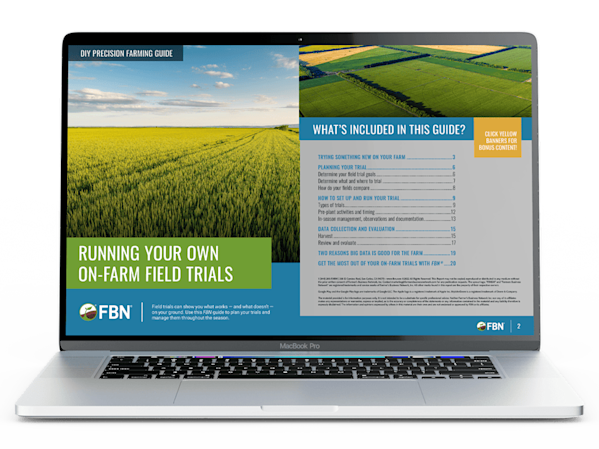Running Your Own On-Farm Field Trials
Field trials can effectively show you what works - and what doesn’t - on your unique land.
FBN®'s Running Your Own On-Farm Field Trials Guide illustrates how conducting on-farm trials on your own acres could potentially save your ag operation valuable time and money, setting your farm up for future success. With a wealth of helpful information about running on-farm trials, the guide will teach you how to:
Plan, set up and run your trial
Collect and evaluate your trial data
Maximize your on-farm field trial results
Take the next steps to select seed and other key inputs based on your results
To get your free copy, simply fill out the brief form below.

Complete the form to access your free Running Your Own On-Farm Field Trials Guide.